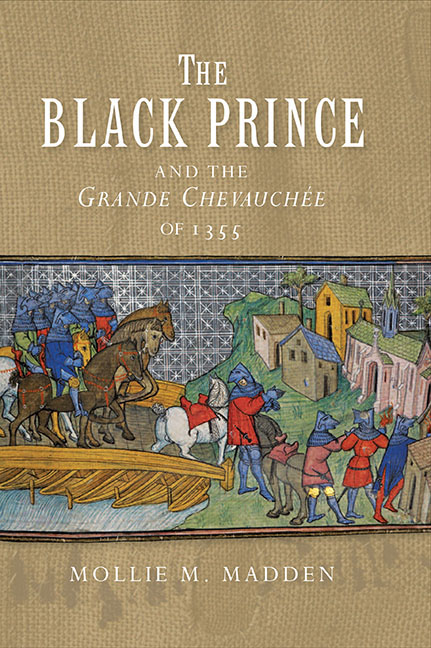Book contents
- Frontmatter
- Dedication
- Contents
- List of Illustrations
- Acknowledgements
- List of Abbreviations
- A Note on Measurements
- Map
- Introduction
- 1 The Preparations for the Chevauchée: England's Existing System of Purveyance
- 2 A Competent Military Force: England's Existing System of Recruitment
- 3 The Campaign to Narbonne: An Efficient System of Supply
- 4 The Return to Bordeaux: A Test of Endurance
- 5 After the Campaign
- Conclusion
- Appendix 1 Ships of the Prince's Fleet
- Appendix 2 Edward of Woodstock's Army
- Appendix 3 The Prince's March
- Appendix 4 Financial Tables
- Bibliography
- Index
- Warfare in History
3 - The Campaign to Narbonne: An Efficient System of Supply
Published online by Cambridge University Press: 17 October 2019
- Frontmatter
- Dedication
- Contents
- List of Illustrations
- Acknowledgements
- List of Abbreviations
- A Note on Measurements
- Map
- Introduction
- 1 The Preparations for the Chevauchée: England's Existing System of Purveyance
- 2 A Competent Military Force: England's Existing System of Recruitment
- 3 The Campaign to Narbonne: An Efficient System of Supply
- 4 The Return to Bordeaux: A Test of Endurance
- 5 After the Campaign
- Conclusion
- Appendix 1 Ships of the Prince's Fleet
- Appendix 2 Edward of Woodstock's Army
- Appendix 3 The Prince's March
- Appendix 4 Financial Tables
- Bibliography
- Index
- Warfare in History
Summary
The preparations in England completed and a favorable wind at long last obtained, the Prince and his company finally set sail from Plymouth on 9 September 1355 and arrived in the Gironde on 20 September. The elevenday passage seems to have been moderately uneventful, although several horses were lost during the voyage. Several Cheshire archers belonging to the companies of Hamon Mascy and Robert Brun lost their horses during the voyage and collected £12 18s 8d as a ‘gift in aid of expenditures for … horses lost at sea.’ At least one ship was lost. The owner, Nicholas de Rothum, received a pardon of a 100-marks debt and ‘the goods in a ship of Scotland arrested by him in the Tyne and the ransoms of the Scots therein’ as compensation, and an unnamed shipmaster accepted 13s 9d as a reimbursement for repairs to his vessel.
Upon landing in Bordeaux, final preparations for the fall chevauchée began and must have proceeded quickly, as the campaign set out within two weeks of dropping anchor in Bordeaux – they did have to wait for the horses to recover from the eleven-day voyage. The rapidity with which these last arrangements were made suggests that the Gascons had already been preparing for the expedition. On the whole, the expedition was well organized, prepared for the logistical challenges of the march, and flexible enough to pursue what Yuval Harari terms a radical raiding strategy through southern France, a strategy which the army used effectively. That strategy and the organization of the army into three battles may have been decided upon prior to the departure from England but would certainly have been revisited in Bordeaux when the Gascons joined the force. The first section of the march was probably pre-scouted, almost certainly to Arouille (81 miles [130km]) where the banners were unfurled and the army divided into three battles, and possibly as far as Toulouse, about 153 miles (246km) following a mostly direct route but roughly 186 miles (300km) following the route taken by the army.
This chapter, then, covers the first half of the Prince's campaign: the march from Bordeaux to Narbonne.
- Type
- Chapter
- Information
- The Black Prince and the Grande Chevauchée of 1355 , pp. 91 - 142Publisher: Boydell & BrewerPrint publication year: 2018

